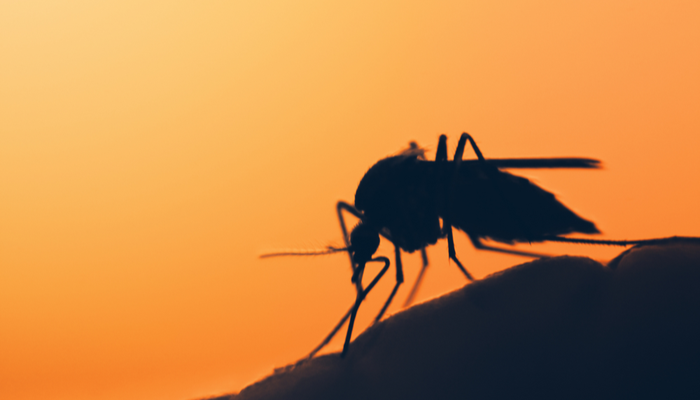.jpg?width=800&height=533&name=Galapagos%20Tortoise%20(comp).jpg)
In the spirit of winter cheer, here’s a present to unwrap from BioStrata: seven of the most interesting, quirky or instrumental life scientific advances we read about during the month of December. That’s two more stories than we usually include in our monthly ‘so much science' blog!
As always, our selection was chosen to help you keep up with breakthroughs in the life sciences at one of the busiest times of the year. From new nanotweezers to fresh hopes for heart transplants, there’s plenty to be thankful for this holiday season.
Biofuel intentions
Who’d have thought that a potential alternative to fossil fuels would come from research into the guts of a crustacean? Well, that’s exactly what an international team of scientists discovered when investigating the gribble!
These marine menaces are long-time scroungers of seafarers, as they see boats more as buffets (even when the boats are protected with lignin). The researchers discovered that the hemocyanins in gribble hindguts are crucial for breaking down lignin-treated wood. Scientists now think that adding hemocyanins might be a cheaper and cleaner type of pre-treatment for biomass hydrolysis, giving hope for new biofuels. So, while these crustaceans have long given mariners sinking feelings, they now have us sailing towards brighter horizons.
The venom wonders of the world
The battle against antibiotic resistance continues to rage, but an international team of scientists has a present for us this Christmas—a new antimicrobial peptide based on a toxin produced by a species of South American Wasp.
This new antibiotic is a modified version of a 12-amino acid peptide that is endogenous to insects like bees and wasps, which acts as a form of natural antibiotic by disrupting bacterial cell walls. To the researcher’s excitement, the new drug completely cleared mice from common infections in as little as four days.
Theoretically safe for human use, this modified peptide is causing a fair bit of buzz in the research community.
Long live Lonesome George
Although sadly passing away in 2012, the spirit of Lonesome George lives on. More than 35 scientists have sequenced his genome (and the genome of another giant tortoise species) to try and understand why he lived for so long.
While this research is undoubtedly exciting, it can be tricky to identify a single cause of complex traits such as lifespan. Nevertheless, scientists think it may have something to do with their ‘souped-up’ immune systems. For example, the tortoises carried 12 copies of perforin, which allows immune cells to punch holes in invading cells. Mammals, for comparison, have just one.
Pair this super immunity with ultra-efficient DNA repair enzymes, expanded tumour suppressor genes and altered metabolic and mitochondrial processes, and you may have a recipe for an extended lifespan.
Pincher this: molecular tweezers for exploring living cells
Imagine using nanotweezers to extract nucleic acids (and other single biomolecules) from single cells without killing them. This may sound like science fiction, but it’s precisely what a team of scientists from several institutions across the globe have recently developed.
The new tweezers have the potential to transform biology. Thus far, most examinations of the inside of single cells have effectively been ‘autopsies’—as such, we only have snapshots of a cell’s molecular composition at its death.
However, these tweezers will now make it possible for scientists to perform surgeries on living cells, providing insights into what they look like at given stages in their lifecycles. What’s more, scientists can perform multiple biopsies on the same cell, so they can track its composition over time.
Such long-term analysis could help us better understand when, why and how diseased cells stop working. Not a bad prize for the world’s smallest game of ‘Operation’!
The object of my infection
It seems scientists have been underestimating an important enemy in our war against bacteria-borne diseases: persister cells. Apparently, these cells can actually weaken the immune system.
Acting like sleeper agents, persister cells enter a pseudo-dormant state that allows them to hide out inside macrophages and evade antibiotics for months. Originally these sleeper cells were thought to be time-bombs for re-infection, but it seems that they may be doing something more nefarious.
For example, a team of German and British scientists discovered that Salmonella persister cells can reprogram macrophages to adopt a non-inflammatory and infection-permissive state.
Yet, it’s not all doom and gloom. The scientists think this secret sleeper behaviour may be a potential weak-point that we can exploit in the next phase of the arms-race against antimicrobial resistance.
Cross-species transplants might be heart to beat
We don’t have enough organs to meet the needs of people with organ failure, including those that require replacement hearts. Transplanting organs from other animals has been considered as a solution for this—but, alas, a disappointing and unsuccessful one, since the patient’s immune system rejects the donated heart.
Scientists had hoped that genetically modifying the donor hearts might help avoid rejection, but this approach hadn’t been very promising for interspecies heart transplants. Until now…
An international team of scientists recently transplanted genetically altered porcine hearts into baboons. The genetic modifications made to the pig hearts enabled the baboons to survive for more than six months. What’s more, the scientists used an approach thought to be potentially safer for humans (although more research will surely be required before it can enter wider circulation).
All work and no plague…
Every supervillain needs an origin story, and the Black Death has finally got one of its own. Scientists discovered the earliest known case of the plague in humans: 4,900 years ago, in Sweden.
Yet, it doesn’t stop there. The scientists worked to get an even more detailed picture of how the plague, caused by Yersinia pestis, likely arrived in Northern Europe. They did this by analysing the genomes of the black death as well as those of infected and uninfected humans (not an easy undertaking I’m sure).
From this work, the researchers proposed the theory that ancestral versions of Y. pestis evolved in Southeastern Europe as early as 6100 years ago. Trading then spread the bacteria across Europe, where it eventually mutated into the form found in Sweden—making it the oldest known highly virulent plague strain. This early version of the black death (and other younger ones) are thought to be responsible for wiping out most of Neolithic Europe. This ancient forensic study leaves this author grateful to live in an era of antibiotics.
Want to keep up to date with the latest life science and marketing news? Then subscribe to our monthly newsletter:





